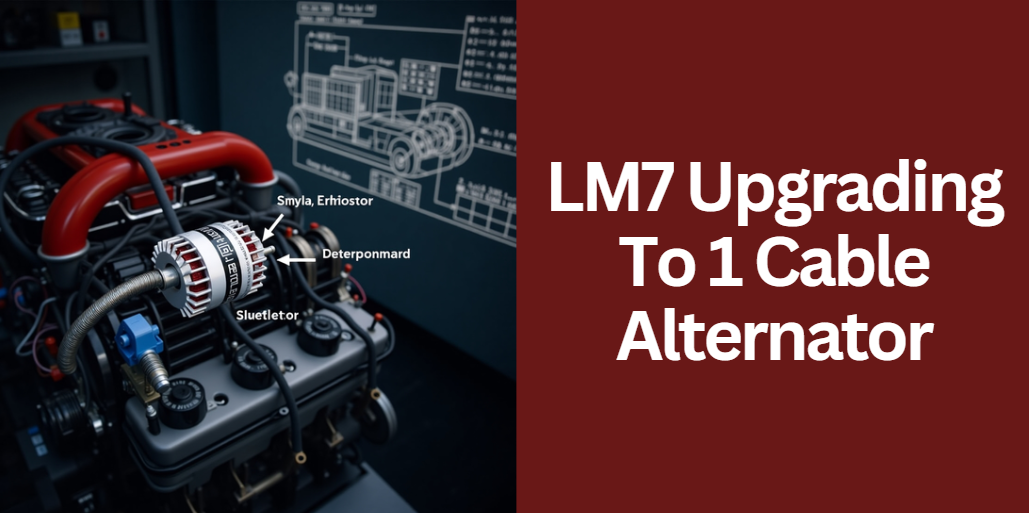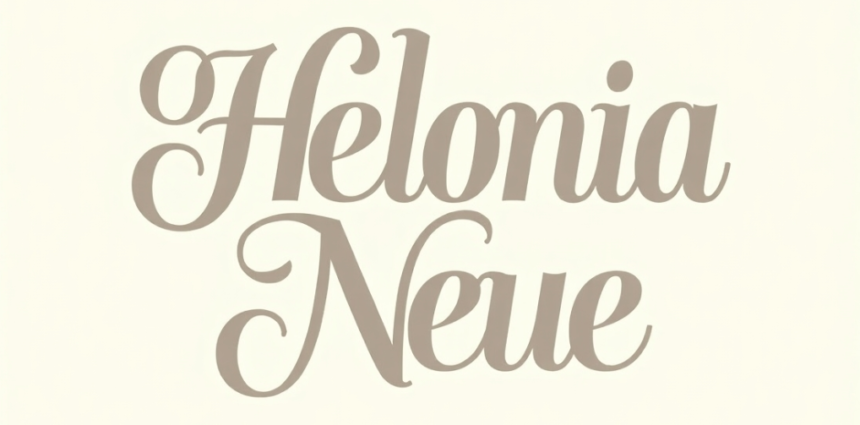In today’s fast-evolving design landscape, typography is more than just selecting a font; it is an art that shapes the visual identity of brands and influences reader engagement. Helonia Neue stands at the forefront of this revolution, combining the precision of geometric design with a warm, human touch.
This article is designed to serve as your ultimate guide to understanding and mastering helonia neue. Whether you are a seasoned designer or just starting your creative journey, this guide provides practical insights and detailed information aimed at boosting your knowledge and helping you leverage this exceptional typeface for superior visual communication.
Understanding Helonia Neue: A Deep Dive
What is Helonia Neue?
Helonia Neue is a modern sans-serif typeface that bridges the gap between strict geometric design and organic, humanist aesthetics. Its design merges clean, precise lines with subtle curves, resulting in a look that is both contemporary and inviting. Unlike older typefaces that may seem outdated or overly rigid, helonia neue provides the clarity and versatility needed in today’s multi-platform world.
In essence, the genius of helonia neue lies in its balanced design:
- The geometric structure imparts a sense of order and modernity.
- The integrated humanist elements soften the rigidity, making text appear approachable and friendly.
Design Philosophy and Unique Qualities
At the heart of helonia neue is a philosophy that prioritizes both form and function. Its design was carefully crafted to ensure maximum readability across different mediums while maintaining an aesthetic quality that can enhance any branding effort. This typeface is an embodiment of simplicity and sophistication, making it ideal for:
- Digital interfaces where screen clarity is paramount.
- Print media that demand elegance and consistency.
- Branding initiatives that require a unique yet timeless identity.
History and Evolution of Helonia Neue
Origins and Background
The evolution of helonia neue can be traced back to earlier iterations of similar typefaces that aimed to capture the essence of minimalist design. The original concept was to create a font that reflected the principles of Swiss design and Bauhaus minimalism.
Over time, designers refined the concept by incorporating subtle variations in letter shapes and spacing, eventually leading to the modern version we know today as helonia neue.
Evolution and Modernization
As technology advanced, there was a clear need for typefaces that could perform equally well on both digital screens and in print. Helonia Neue was updated to feature:
- Improved kerning and spacing for enhanced screen readability.
- A wider variety of weights and styles to accommodate different design needs.
- Optimization for a global audience, supporting multiple languages without compromising on style.
A historical timeline would illustrate these changes side by side; for example:
| Era | Characteristics | Key Changes in Helonia Neue |
|---|---|---|
| Early 2000s | Basic sans-serif with strict geometry | Introduction of organic curves |
| Mid-2000s | Minimalist design influenced by Swiss art | Refinement of spacing and kerning |
| Late 2000s | Emergence of digital-first design trends | Addition of multiple weights/styles and OpenType features |
This evolution illustrates how helonia neue has transformed over the years to become a versatile and essential design tool.
Technical Breakdown and Specifications
Anatomy of the Typeface
Understanding the technical details of helonia neue is crucial for effective application. The typeface features:
- A balanced x-height that ensures legibility even at smaller sizes.
- Well-proportioned ascenders and descenders that provide a pleasing vertical rhythm.
- Thoughtful kerning and spacing, which prevent overcrowding and improve readability.
The following table summarizes some key specifications:
| Specification | Helonia Neue Detail |
|---|---|
| X-height | Optimized for enhanced readability |
| Ascenders/Descenders | Balanced to create a consistent visual flow |
| Available Weights | Multiple (e.g., Light, Regular, Bold, Italic) |
| Format Availability | TTF, OTF, Web font formats |
Licensing and File Formats
Helonia Neue is available in a range of file formats that cater to both print and digital environments. It is essential to ensure you obtain the correct licensing for commercial use, as this can affect both your project’s legal standing and its overall design quality.
Applications and Real-World Use
Branding and Corporate Identity
For brands seeking a modern yet timeless identity, helonia neue serves as a powerful visual tool. Companies have adopted this typeface in their logos, business cards, and marketing materials because it communicates a sense of professionalism and creativity without appearing overly ornate.
One notable example of effective branding with helonia neue can be seen in companies that carefully use its bold weights for headings paired with regular weights for supplementary text, thereby creating a harmonious visual hierarchy.
Digital and UI/UX Design
In the realm of digital design, screen readability is imperative. Helonia Neue is optimized for digital displays, ensuring that text remains crisp and clear on devices ranging from smartphones to large monitors. Designers often integrate this typeface into:
- Website headers and navigation menus.
- Mobile application interfaces where space is a premium.
- Interactive digital media where consistent readability enhances user experience.
Print and Editorial Media
Print media benefits greatly from the clean and balanced design of helonia neue. Its refined letterforms make it an ideal candidate for long-form editorial content, magazine layouts, and poster designs. The overall visual clarity and subtle elegance of the typeface help ensure that printed text remains legible and aesthetically pleasing.
Multilingual and Global Applications
Helonia Neue supports various international characters, making it a versatile choice for global brands. Its neutral yet sophisticated design helps ensure consistent messaging and visual appeal across diverse cultural contexts.
Design Integration and Pairing Strategies
Effective Font Pairings
When integrating helonia neue into a design project, pairing it with complementary typefaces can further enhance its appeal. For instance, combining helonia neue with a serif font like Times New Roman can create a striking contrast that is both dynamic and balanced. Alternatively, using varying weights of helonia neue itself can maintain consistency while establishing a clear visual hierarchy.
Layout and Aesthetic Considerations
Proper spacing and color selection are pivotal when utilizing helonia neue. Designers should consider:
- Adequate white space to prevent visual clutter.
- Strategic use of contrasting colors to highlight key elements.
- Adopting grid systems to ensure that typography remains aligned and structured.
A simple list of best practices might include:
- Start with a base grid for consistent margins.
- Use bold variants for headers and regular for body text.
- Test the color contrast to ensure legibility on all devices.
Customization Options
Designers can further personalize helonia neue by leveraging available OpenType features. This might include customized ligatures, alternate characters, or stylistic sets that allow the typeface to adapt to unique brand aesthetics.
Comparative Analysis: Helonia Neue vs. Competitor Fonts
Comparing helonia neue with other popular typefaces can illustrate its superior qualities. Consider a side-by-side comparison:
| Feature | Helonia Neue | Competitor Example (e.g., Helvetica Neue) |
|---|---|---|
| Geometric Precision | Combines geometric precision with humanist curves | More rigid geometric design |
| Versatility | Multiple weights and styles for varied applications | Limited style variations |
| Readability | Optimized for both screen and print | Excellent, but sometimes too neutral |
| Overall Aesthetic | Modern, warm, and approachable | Clean, but may lack distinctive personality |
Such a detailed comparative analysis demonstrates how helonia neue stands out in terms of design integration and adaptability.
Case Studies and Real-World Examples
To illustrate the effectiveness of helonia neue, consider several real-world examples:
- Successful Branding: A technology company revamped its corporate identity using helonia neue. By applying bold weights for its logo and regular styles for supporting material, the brand achieved a modern look that resonated with its target audience.
- UI/UX Implementation: A mobile app designer incorporated helonia neue into the navigation and body text of an interface, resulting in enhanced readability and user satisfaction.
- Editorial Excellence: A lifestyle magazine utilized helonia neue in its print edition, opting for different weights to delineate headings, subheadings, and body content. The overall layout maintained a clean, professional aesthetic that increased reader engagement.
Practical Implementation Guide
Step-by-Step Integration
Designing with helonia neue need not be complicated. Here’s a streamlined approach to implement the typeface effectively:
- Set Up Your Document: Use a well-defined grid system in your design software, be it Adobe Illustrator or Photoshop.
- Select the Appropriate Weight: Choose bold for titles and headlines, and regular or light for body text.
- Adjust Kerning and Spacing: Ensure that the spacing between letters enhances readability without crowding the text.
- Incorporate Colors Thoughtfully: Use complementary color schemes that allow helonia neue to stand out while maintaining a cohesive design.
- Test Across Media: Verify that the typeface renders well on both digital screens and in print.
Frequently Asked Questions
Q1: How does using Helonia Neue improve user engagement in digital interfaces?
By integrating Helonia Neue into websites or mobile apps, designers can create interfaces that not only look modern and stylish but also enhance the overall user experience. Its balanced structure and clear letterforms reduce eye strain and help users quickly process content. The typeface’s consistent, clean appearance contributes to a seamless browsing experience that can lead to longer visit times and higher user satisfaction.
Q2: What advanced customization options are available for Helonia Neue?
Helonia Neue offers a range of advanced customization features beyond basic weights and styles. Designers can take advantage of OpenType capabilities, such as alternate characters and ligatures, which allow for creative variations that can set a unique tone for a brand. Customizable kerning and spacing adjustments enable fine-tuning, ensuring that the typeface perfectly matches the specific aesthetic and layout requirements of any project.
Q3: How is the licensing process for Helonia Neue different from those of free typefaces?
Unlike many free fonts, the licensing process for Helonia Neue typically involves purchasing a commercial license. This not only guarantees access to high-quality files in various formats (TTF, OTF, etc.) but also ensures you receive regular updates and support. A commercial license often provides broader usage rights, covering both digital and print media, which is essential for maintaining legal protection in professional projects.
Q4: What best practices ensure optimal scaling and responsiveness when using Helonia Neue in web design?
To achieve the best results across different devices, designers should incorporate fluid typography techniques when using Helonia Neue. This includes setting relative font sizes (using units like em or rem) and employing media queries to adjust sizes and weights for various screen resolutions. Testing the font across multiple browsers and devices is crucial to fine-tune its appearance, ensuring the text scales gracefully on mobile, tablet, and desktop interfaces.
Q5: Can Helonia Neue be easily integrated into popular content management systems and web frameworks?
Yes, Helonia Neue can be seamlessly integrated into many modern content management systems (CMS) and web frameworks. It is available in web-friendly formats and can be embedded using CSS @font-face rules or through font hosting services like Adobe Fonts or Google Web Fonts (if available). With proper setup, the typeface maintains its clarity and visual appeal across dynamic content platforms, making it an excellent choice for professionals seeking a consistent look for their online properties.
Conclusion
In summary, Helonia Neue is not merely a typeface—it represents a harmonious blend of modern design and functional versatility that makes it indispensable for today’s branding and design projects. This comprehensive guide covered everything from the history and technical specifications to practical applications and expert insights.
By mastering helonia neue, designers and brands can enhance their visual communications, create compelling narratives, and achieve a timeless aesthetic across multiple platforms.
Embrace the power of helonia neue and let your design speak volumes with clarity, elegance, and innovation.
Recommended Articles
The Ultimate Guide to Teasemoonga: In-Depth Analysis, Trends and How-to Tips
In-Depth Analysis: grattoh is a rat ereklo_game maplestory reddit
The Ultimate Guide to Hitlmila: Origins, Principles, Applications and Future Trends
Ultimate Guide to Nurture Tech Tips Embedtree – Master Technology with Ease
The Definitive Guide to MyLawyer360: Revolutionizing Access to Legal Services





